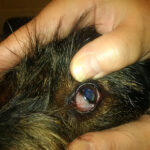Can Dogs Have Scoliosis
Dogs are known to be man’s best friend and have been living with humans for thousands of years. They are loyal, friendly, and always there to cheer us up. However, as much as we love our furry companions, they are not immune to health problems.
One such issue that can affect dogs is scoliosis. Scoliosis is a condition where the spine curves from side to side instead of being straight. It is a common condition in humans, but can dogs have scoliosis too?
In this article, we will explore whether dogs can have scoliosis, what causes it, how to diagnose it, and how it can be treated. So let’s dive in!
Can Dogs Have Scoliosis?
The short answer is yes – dogs can have scoliosis. Scoliosis in dogs is not as common as it is in humans, but it does occur. The condition affects all breeds and sizes of dogs, but some breeds are more prone to developing it than others.
What Causes Scoliosis in Dogs?
Scoliosis in dogs can be caused by various factors such as genetics, trauma, infection, or congenital abnormalities. In some cases, the cause of scoliosis may be unknown.
Genetics: Some dog breeds are predisposed to developing scoliosis due to their genetics. Breeds like the Basset Hound and Dachshund have longer backs than other breeds and are therefore more susceptible to spinal issues like scoliosis.
Trauma: Trauma to the spine can also cause scoliosis in dogs. This can happen due to accidents or falls that cause damage to the spinal cord or vertebrae.
Infection: Certain infections like meningitis or diskospondylitis (an infection that affects the vertebrae) can lead to scoliosis in dogs.
Congenital Abnormalities: Sometimes, puppies are born with spinal abnormalities that can cause scoliosis. This is known as congenital scoliosis.
How to Diagnose Scoliosis in Dogs?
Diagnosing scoliosis in dogs requires a thorough physical examination by a veterinarian. The vet will look for signs of spinal curvature, asymmetry, or abnormal posture. They may also take x-rays to get a better view of the spine and determine the degree of curvature.
In some cases, additional tests like blood work, MRI, or CT scans may be required to rule out other underlying conditions that could be causing the scoliosis.
How Can Scoliosis in Dogs Be Treated?
The treatment for scoliosis in dogs depends on the severity of the condition and its underlying cause. In mild cases, no treatment may be necessary, and the dog can live a normal life without any issues. However, if the curvature is severe or causing discomfort, more aggressive measures may need to be taken.
Treatment options for scoliosis in dogs include:
1. Pain Management: If the scoliosis is causing pain or discomfort, pain management medications like nonsteroidal anti-inflammatory drugs (NSAIDs) may be prescribed.
2. Physical Therapy: Physical therapy can help relieve pain and improve mobility in dogs with scoliosis. This includes exercises that strengthen the muscles around the spine and improve flexibility.
3. Surgery: In severe cases of scoliosis where the curvature is affecting the dog’s quality of life, surgery may be necessary. The goal of surgery is to straighten the spine and prevent further damage from occurring.
In Conclusion
Scoliosis in dogs is a real issue that pet owners need to be aware of. While it is not as common as it is in humans, it does occur and can cause discomfort and pain if left untreated. By understanding what causes scoliosis in dogs, how to diagnose it, and how it can be treated, pet owners can ensure their furry companions live healthy and happy lives.



